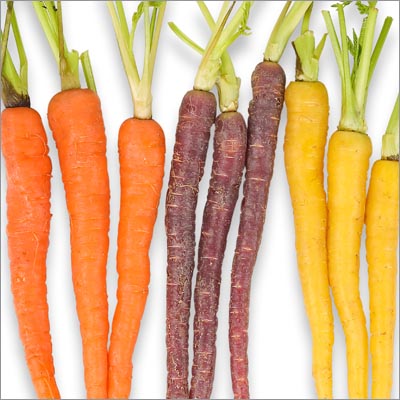Right Stuff: Rainbow cauliflower and carrots

Brebca - stock.adobe.com.
Cauliflower is having a moment, and not just because it can stand in for carbs like rice.
Exhibit A: rainbow cauliflower.
You can thank traditional breeding for these new or long-forgotten varieties. (Orange cauliflower, for example, was discovered in a Canadian marsh in the 1970s.)
Ditto for rainbow carrots. Carrots were yellow or purple until Dutch breeders reportedly produced the orange household staple in the 1600s. Now there’s even white and red!

Naturally occurring plant pigments account for the color riot. Beta-carotene makes carrots and cauliflower orange, while anthocyanins turn them purple. Lycopene (plus beta-carotene) pushes carrots into the red zone, while lutein yields yellow.
Less beta-carotene means less vitamin A, but overall, you can expect roughly similar nutrients, regardless of color.
That means a decent dose of fiber, vitamin C, vitamin K, and folate from cauliflower. (The green variety—cauliflower crossed with broccoli—has extra C.) Carrots deliver fiber and vitamin A. And both have just 20 to 30 calories in a half cup.
Check out The Healthy Cook ("Three veggie dips") for three addictive dips for raw or roasted veggies, and the Dish of the Month for a mesmerizing carrot salad.
It’s not just the colorful leaves that are changing it up this fall.
Photos: stock.adobe.com: Brebca (cauliflower), oqba (carrots).
Tags
Topics

